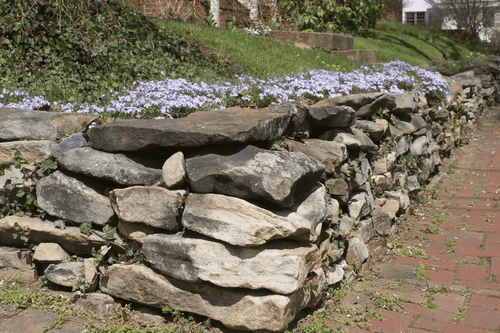-
Name badges are an important plan of any event. If you are the event manager of a large-scale event, you need to be fully equipped and prepared to overcome any hiccup or bump. Reading this piece will help you know anything and everything about name tags.
The first few steps
While you gear up for the D-day, you must create a spreadsheet with the names of attendees, sorted as per the alphabetical order. This will save you a lot of time and effort of arranging them in order after printing. You must ask your Name badges Australia vendor to maintain the alphabetical order at each step i.e. printing, assembling in holders, transport to the destination and unpacking and arrangement at the registration desk.
Clearly define what information will go on the badge. The guests’ name is an obvious one, but apart from that you may want to consider their company or title. However, you must not put too much information on the tag and make it cluttered and illegible. The little piece of cardboard has limited space and you must bear that in mind. You must include information about which you are sure and you don’t run the risk of getting an inaccurate thing printed. Apart from the guests’ name, you must include the logo of the company hosting the event.
Template and printing
Once you have clarity on the information that needs to go on the badge, you need to plan about the format in which it goes on to the paper. You need to choose paper that is specifically manufactured for name badges. There are adhesive name badges too, if you want to stick the name tags on the attendees’ t-shirts, visualize the marathons for the look!
Now finalize a template in which the information must be put in, using a template will create an easy structure that you can follow. Once the template is ready, you just need to do a mail merge to insert the names and other information from the spreadsheet to the template sections. If you are not familiar with mail merge, then there are many YouTube tutorials that you can refer to.
Once the mail merge is done, skim the document with a cursory glance to ensure everything turned the way it was supposed to be. Do some random checks to confirm if all names that were there on the spreadsheet have been included in the document.
Custom badges for last minute registrations
Despite all your efforts it is not uncommon to find yourself in a situation where there are guests who do not have a name tag. Don’t worry, there are some solutions for this problem and they will help you sail.
- Have a portable printer: If you want a professional look in all name tags, having a portable printer helps. But you must have the specific paper needed in the printer stocked up.
- Handwritten tags: You can get a few black badges created by your Name badges Online provider. When a new guest walks in, just use a good quality marker to write the information on the tag.
 votre commentaire
votre commentaire
-
For homeowners, a clogged drain happens to be one of the nastiest plumbing problems. When water no longer goes down your drains, it can quickly turn into a nightmarish experience. Not only would it render your bathroom or your kitchen sink useless, but can also result in a burst pipe. However, this isn’t an uncommon issue. In fact, blocked drains Penrith is one of the most common problems for which individuals contact plumbing companies in the city.
What causes a blocked drain?
Your drains could clog up in a number of ways. However, in every case, there are a number of warning signs that can help you get the wind of the problem beforehand. For instance, if you notice standing water in the shower or the sink or smell foul odors, it likely indicates an impending drain blockage. Some of the most common causes of clogged drains are:
- Hair: This is typically a problem with shower and tub drains. Hair flowing into the drains can stick to its walls and start building up, eventually causing a blockage.
- Food and grease: If there is a blockage in the drain of your kitchen sink, it is likely a result of food particles and grease.
- Toothpaste: One of the most common reasons behind a blocked bathroom sink is hardened toothpaste. Shaving fallout could be an issue too, in many cases.
Various other types of dirt and solids could result in clogged drains as well. If you are unsure about the reason behind the problem, you can rope in an expert to take a look.
Different ways to clear a clogged drain
In case of minor drain clogs, there are a number of DIY techniques that you could implement to clear the blockage. Some of the most common ways to fix clogged drains are:
1. Breaking down grease or dissolving the clog with vinegar and baking soda
One of the most common DIY hacks for cleaning a clogged drain is to use a solution of baking soda and vinegar. All you have to do is pour some hot water into the drain and follow it up with a mixture consisting of equal parts of vinegar and baking soda. After about twenty to thirty minutes, pour hot water again to clear up the pipe.
2. Using an auger
You can purchase a drain snake or a closet auger at a local store and use it to physically break down and remove the clog. These tools are flexible and can move around deep inside the drainpipe to clean it. If you do not have an auger, you can simply narrow a clothes hanger and use it to poke and remove the obstruction.
3. Using a plunger
A drain plunger is easy to obtain and easy to use. In case of sink drains and floor drains, you can place the suction cup of the plunger around the opening and push downwards. The hydraulic pressure created would dislodge the obstruction.
What to do if DIY methods do not work?
If you have already tried out the DIY methods but failed to clear the blockage, it is time to rope in a professional. Look for a reliable plumber Penrith and schedule a visit. A professional plumber would have the necessary expertise and the equipment needed for the job. However, do make sure to hire a plumbing company that has a good reputation.
 votre commentaire
votre commentaire
-
If you have a fascination for landscaping, you probably know the functional value of retaining walls. Both commercial and residential landscaping involves the installation of retaining walls. Particularly, if you are someone who loves hardscaping or stonework, retaining walls can be a great addition to your property. In the process, you can transform your lawn into an eye-soothing garden with flowerbeds, central features and other additions.
Of course, professionalism matters when you seek landscaping services. Therefore, it makes sense why homeowners value experts for installing different types of retaining walls in their gardens.
What is a retaining wall?
Retaining walls refer to structures in your garden, designed to offer resistance to lateral soil pressure. These walls are constructed to laterally support the soil, ensuring that it remains intact at different levels on both sides. With these structures in place, you can restrain soil in your garden to a slope. The prime function of retaining walls is to bind soils in places with different elevations.
Functions of retaining walls
- Retaining walls help in stabilizing the land, when you build a garden or a deck. It’s challenging to maintain a sloped landscape, as the soil might loosen and drop down along the slopes.
- As water keeps flowing over the sloped terrain, it tends to erode the soil away. Retaining walls can prevent soil erosion in your garden after irrigation or torrential rain.
- Besides the functional aspects, retaining walls can leverage the aesthetic appeal of your garden. You can integrate these features to cherish some stunning designs even in the backyard. In the process, you can enhance the curb appeal of your property.
Different types of retaining walls
1. Gravity retaining wall
This is a basic type of retaining wall, where the soil is mostly held by weight. In terms of materials, you can use a wide variety of components to make these walls. These include pavers, bricks, unmortared stone, etc. In case the walls are short, you do not need any further reinforcement. However, in most cases, you need to get a small trench dug where the wall can fit into.
2. Anchored retaining wall
Here, the retaining walls are reinforced by anchors. You need to hire experts to get these anchors integrated into the soil, and support them with cables. Using advanced mechanics, these anchors are driven into the earth. The installers inject compressed concrete into their ends for additional support.
3. Sheet Piling retaining walls
In case you are encountering space constraints in your garden, sheet piling retaining walls can come to your rescue. This structure consists of a thin wall, made of wood, steel, or vinyl. The installers integrate these retaining walls directly into the earth. A vertically corrugated structure is often present in these walls for better reinforcement. Particularly, if the soil is soft, these pilings can work wonders.
Why would you need professional retaining wall installers?
Installing an effective retaining wall can be a painstaking and long process. Without adequate experience, the structure may crack, crumble, or budge. This explains why it would be a good idea to hire experts for installing retaining walls Sydney. A professional hand can deliver value to your investment to spruce up the landscapes.
 votre commentaire
votre commentaire
-
When it comes to your outdoor functionality and décor, umbrellas continue to be a versatile inclusion. These are some of the most desired outdoor furniture items that can amplify the overall beauty of your patio. You have several types of outdoor umbrellas available based on their sizes, designs, shapes, and forms in Sydney.
It’s recommended not to go for the cheap one while you shop for an outdoor umbrella. Always remember, investing in a high-quality outdoor umbrella will be more precious than chasing umbrellas across the terrace.
Whether you purchase simple market umbrellas for your small dining set or Cantilever umbrellas to shade a large area, you need to consider a few crucial factors all the time.
How to choose the best outdoor umbrella?
Here are a few tips that you may follow while shopping for a patio umbrella.
1. Consider what you want to shade
The place you want to shade with a patio umbrella is undoubtedly the most vital factor. It will be fair enough to purchase a traditional market umbrella for two to eight-person seating arrangements. A distinct feature of these umbrellas is that they have a center pole that stays mounted through a hole in the center of your dining table. They remain equally expanded around it. You can open or close these kinds of umbrellas simply through a crank or pulling system.
On the other hand, Cantilever umbrellas Sydney are the best for large seating areas. These deluxe outdoor umbrellas use a strong pole from which a long arm spreads to hold the balance of the entire umbrella. Therefore, it covers more area than the traditional one while keeping the central pole away from the canopy.
2. Consider the weather conditions
No doubt, the wind would be the primary adversary for outdoor umbrellas. The ideal tactic is to go for an umbrella design that utilizes more flexible materials such as wood or fiberglass if you reside in an area susceptible to frequent storms. Besides, aluminum is primarily used to manufacture patio umbrellas. However, it cannot prevent windstorms as it lacks flexibility. Therefore, choose your outdoor umbrella carefully as per your weather conditions.
3. Consider different material choices
Umbrella frames are made of fiberglass, wood, or aluminum. Aluminum with the right finish can resist normal weather conditions. The wood frame of teak, ipe, or eucalyptus is also effective for preventing weather damage, but it is expensive. Eventually, fiberglass is the best alternative to aluminum as it is a durable, flexible, non-corrosive material.
4. Size and shape of the area
If you want to shade round dining tables, it would be ideal to go for an octagonal-shaped umbrella. An outdoor umbrella with a rectangular shape is perfect for shading the square and rectangular dining tables. For relatively large areas, choose Cantilever umbrellas with a canopy of at least five feet larger in diameter than the designated area.
Shop around for different types of outdoor umbrellas
Some of the popular outdoor umbrellas you can shop include sunshade umbrellas, market umbrellas, pagoda-style umbrellas, log umbrellas, commercial umbrellas, and Cantilever umbrellas Sydney. When you make the purchase, the sheer variety of options might land you in a dilemma. Depending on your functional requirements and location, get your outdoor umbrella customized!
 votre commentaire
votre commentaire
-
Carolina Bays is a nickname given to the decline of a land that forms a circular crater like on the moon.
This strange geological phenomenon occurred around the 1930s when the Atlantic coast would be photographed from the plane for the first time.
Reporting from Amusingplanet, Some previous scientists believe the Carolina Bays were created because of the impact of meteroit that fell on the Atlantic coast.
While from modern research this crater is too shallow to be said as a former meteroit impact. And there is no evidence to show the existence of a meteorite component.
There used to be half a million Carolina Bays along the Atlantic coast, but only hundreds of them survived or were preserved.
Woods Bay and Bannett's Bay in South Carolina are examples of preserved craters, because most are eroded naturally.
Now the remaining craters are home to a variety of living things, some are filled with water, some are forested.
Source: Indozone.id
 votre commentaire
votre commentaire Suivre le flux RSS des articles
Suivre le flux RSS des articles Suivre le flux RSS des commentaires
Suivre le flux RSS des commentaires





